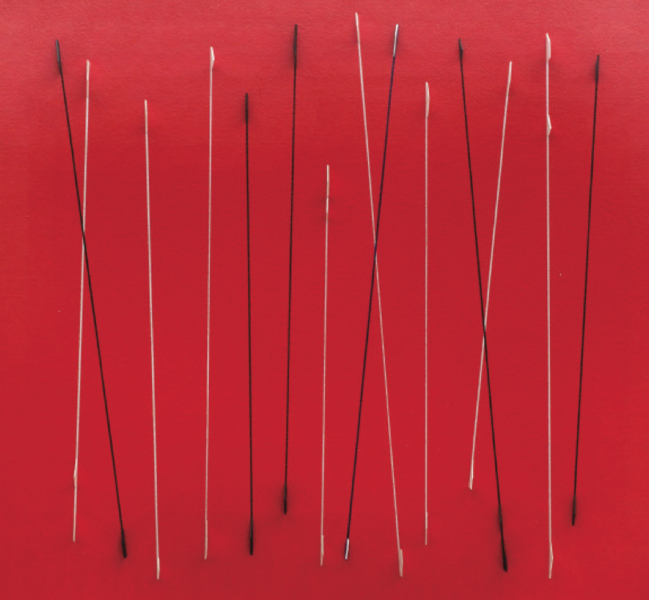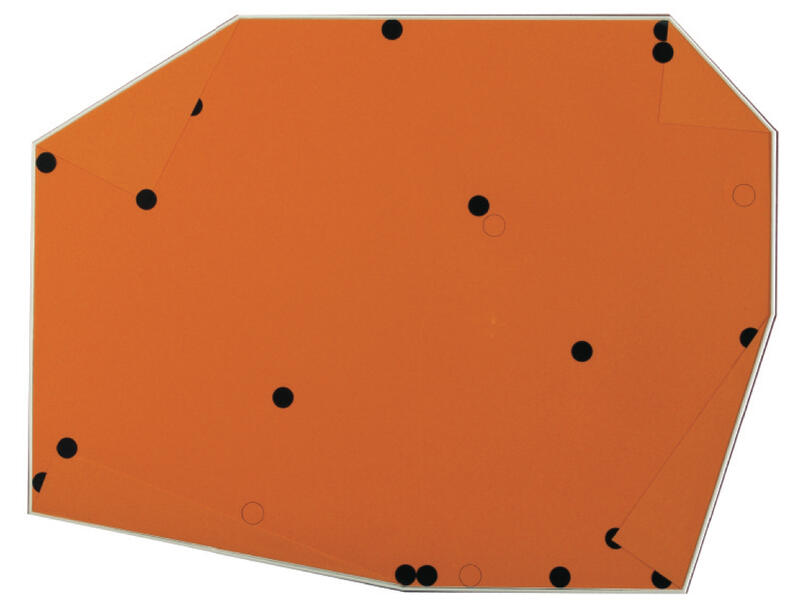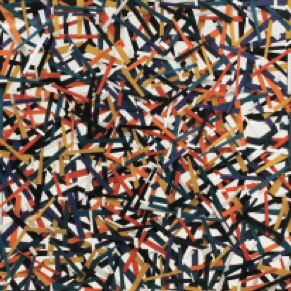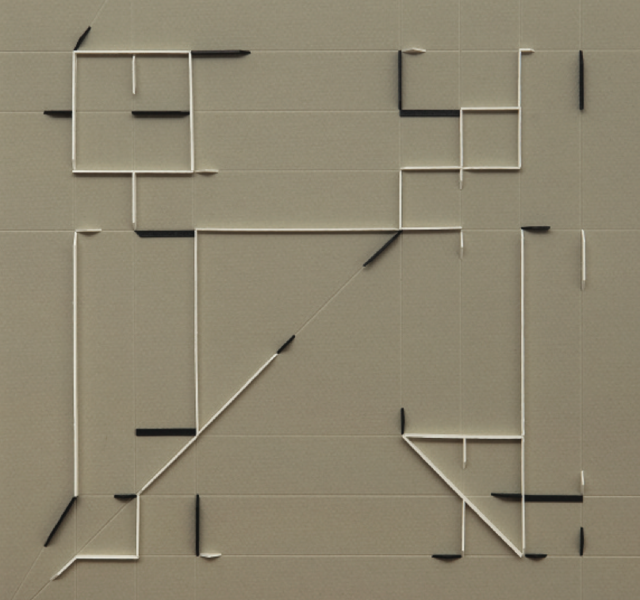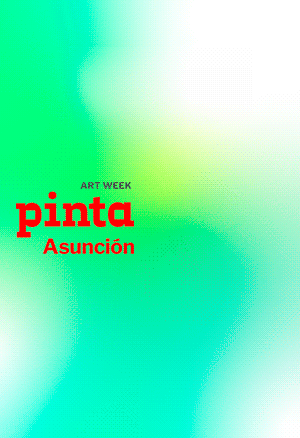macaparana
There were no Impressionist sunsets before Monet painted them. Oscar Wilde knew it, and for this reason he asserted that nature imitates art. Without art, life would be meaningless. Abandoned to its own dynamics, existence would be so boring that living would seem a death sentence. Thanks to art we know joy. All the arts tend to music: they go towards it as if they sought its perfection. They dream of dissolving into rhythms and sounds that captivate us. Music reveals a past that is unknown to us, but that may, perhaps, be real. However, few are the artists who manage to create music through other disciplines. One of those rare artists is the Brazilian Macaparana.
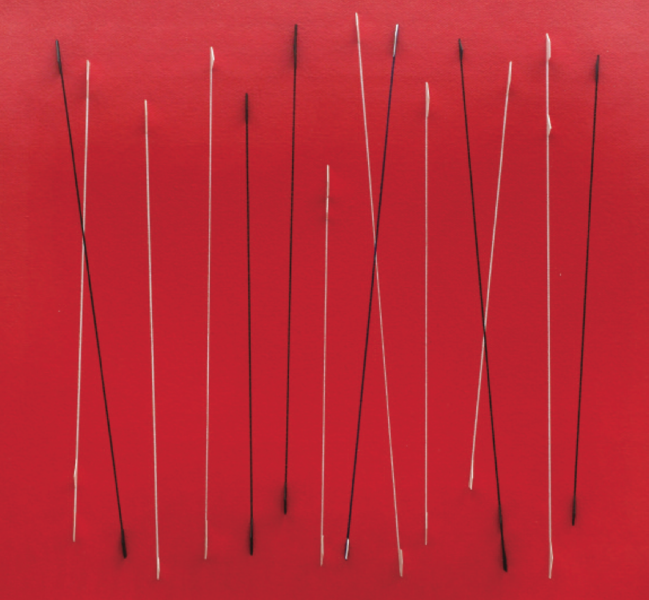
Macaparana was born Jose de Souza Oliveira Filho in the state of Pernambuco in 1952. His birth in the state of Pernambuco dates back to 1952. He started to draw at an early age: the boredom of a long convalescence allowed him to discover the pleasure of inventing worlds with the only help of a piece of paper and a bunch of colored pencils. Little Jose learned to develop his artistic skills in his father’s sewing workshop: fascinated by his colored chalks, his patterns, his rulers, his threads and needles, the boy played with pure forms.
The other artisan in the family was his grandfather, who manufactured cardboard suitcases in the same way they continue to be produced at present in the Northeastern region of Brazil. Both non-academic schools instilled into little Jose the enjoyment of manual labor and educated his gaze by teaching him to focus it on small details. The sophisticated facture and the exquisite formalism of this singular artist are derived from this home learning. Macaparana works in series. Each of his series begins with an investigation in the domain of sensibility. But it is an investigation in the field of the sensible rather than a rational bet. Although the final result mainly resembles a theorem in a state of perfect incandescence, the energy that gives origin to his subtle works belongs to the order of the sensible: he makes poetry with the light, with affection, with the gesture.
He experiments with the infinite possibilities that this potent mixture of geometry and color offers.This is the source of pieces of frozen music. Each work is unique, and at the same time, it is the counterpoint of another work. In his series, when we contemplate an isolated work, we have the feeling that we are seeing in a hollow version another work with which it holds a dialogue and rhymes, like a secret verse.
Macaparana flings himself into the unknown: he works without a previous plan, but his hand already intuits the contour of the adventure he will embark on. He draws; he cuts the cardboard; he questions the materials; he plays with colors. And in this way he gradually builds a small world that brings the hope of beauty to the existing one. Patiently, cut after cut, fold after fold, Macaparana creates joy.
In the 1970s, the artist settled in Sao Paulo. At the same time that he began to explore the world of art, he changed his name and adopted the name of his hometown: Macaparana. This second birth guided him towards those who would become his two great teachers and friends: Willys de Castro and Hércules Barsotti. Thanks to his frequentation of these two visionaries of neoconcretism, Macaparana abandoned figuration and began to explore the infinite labyrinth of abstraction. He assiduously frequented Willys de Castro, one of the most sophisticated and intelligent Latin American artists of the past half century, until de Castro’s demise in 1988. His friendship with Barsotti continues to this day, and it is so close that Macaparana dedicated to him the indispensable catalogue that accompanied the exhibition he presented at Jorge Mara-La Ruche Gallery: that catalogue, which includes texts by Eduardo Stupía and was designed by Manuela López Anaya – is a work of art in and of itself, and it was made possible thanks to the editorial passion of gallery owner Jorge Mara. De Castro and Barsotti functioned as the two opposed and complementary elements that converge in the yin and the yang. Willys de Castro contributed the Apollonian side rational, cerebral of that new world which Macaparana discovered at the age of thirty. Barsotti contributed the Dionysian side: his lyrical and passionate geometry dazzled the artist from the very beginning. Passion and rigor, imagination and rationality, Willys de Castro’s gaze and Hércules Barsotti’s vision combine and are potentiated in Macaparana’s oeuvre. What is most interesting is that his work does not in the least resemble that of his two masters. His is an extremely personal oeuvre that suggests, however, that an indefinable something of their mental poetry survives in the rhythm with which he arranges lines and colors, shadows and volumes on the cardboard surfaces and the wooden panels.
The music Macaparana.composes is a model of rhythms in tension. With wood, paper, cardboard and metal, he achieves joyful silences that function as intervals between notes which can only be heard with the mind. Thus his rhythm arouses our pleasure as viewers. With a minimal range of colors - as if restraint were his freedom - he generates a universe in which one may enjoy the unceasing flow of things. The mighty river where Heraclitus discovered the vertigo of perpetual transformations runs through his world.
Despite the enormous diversity of his works, they all have something in common: the “final” image is never achieved. Although they are apparently perfect productions, completely finished, they are always works in progress, as if they refused to shut themselves away in the ultimate density of matter. Macaparana creates petrified movement. His are works moved by a quiet agitation. Driven by a silent conceptual vibration. It is the spectator’s gaze when viewing them that finally endows them with meaning.
Like the sun, which is always there but is new every morning, Macaparana’s works are a joyful music that makes the world dance, and every hour they resonate with a new melody.
Profile:
Macaparana was born José de Souza Oliveira Filho in the Brazilian state of Pernambuco in 1952. He devoted himself to drawing from an early age: a long convalescence allowed him to discover art with the only help of a piece of paper and a bunch of color pencils. This initial austerity, associated to his passion for music and crafts, defined his style.
His early production was figurative, but when he moved to Sao Paulo he came into contact with the artists of the Neo-Concrete movement. In that city he experienced a sort of second birth, and he acquired a new name. In 1979, Pietro Maria Bardi – founder and director of the Sao Paulo Museum of Art (MASP) – and artist Antonio Maluf, began to call him by the name of his hometown: Macaparana.
Since that time, he has participatd in dozens of exhibitions, art fairs and biennials. He was invited to participate in the Sao Paulo Biennial in 1991. He has shown several times at ARCO, Madrid. Among his latest exhibitions, special mention may be made of his participation in Art Basel (represented by Denise René Gallery) and his two 2010 solo shows, at Jorge Mara-La Ruche Gallery (Buenos Aires) and Dan Gallery (Sao Paulo), respectively.

